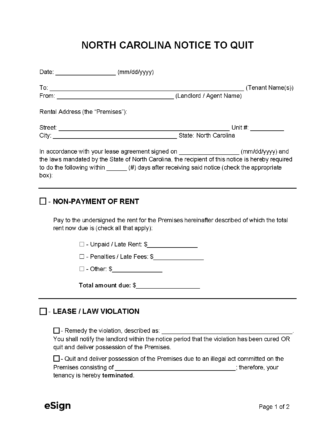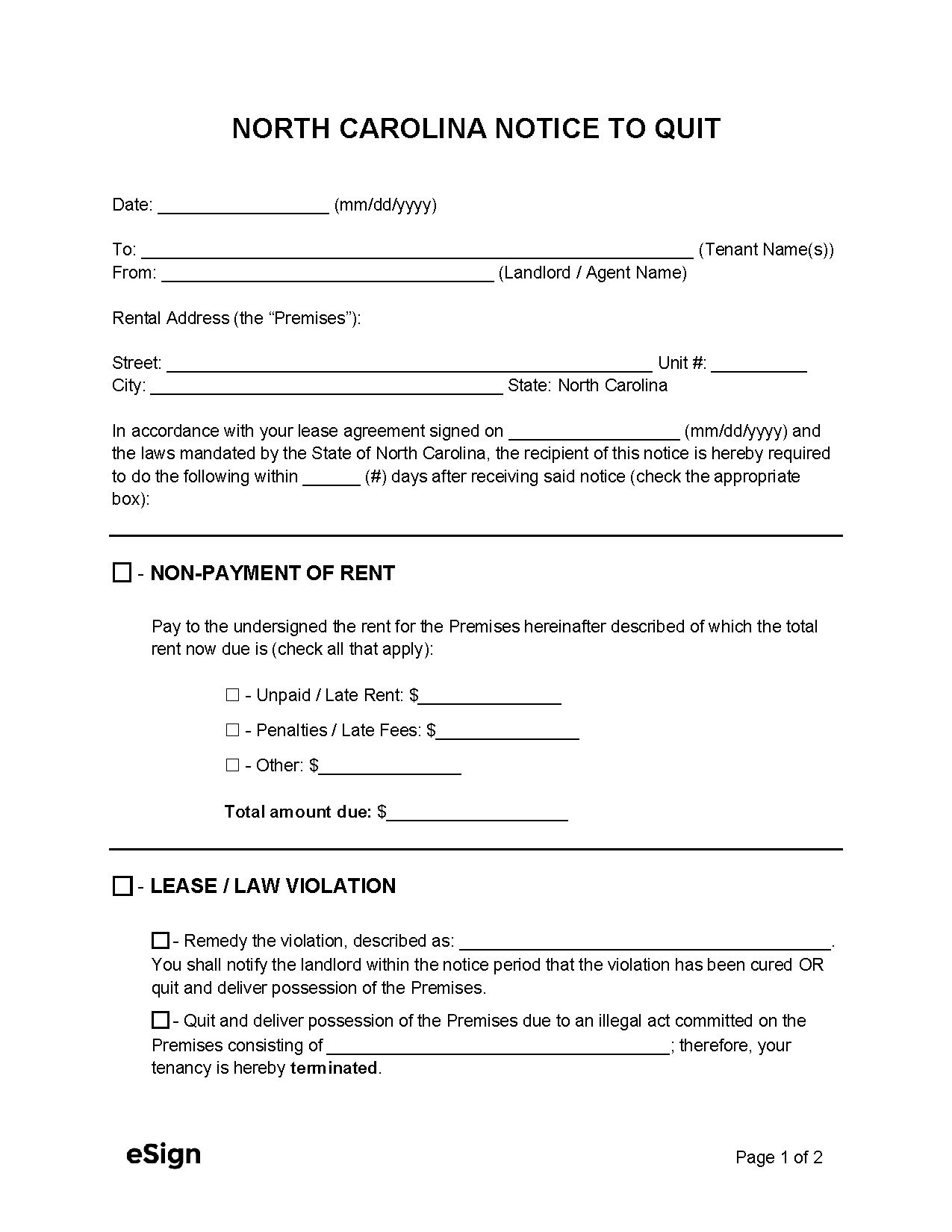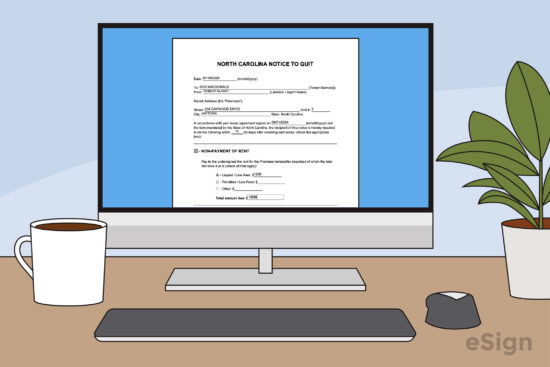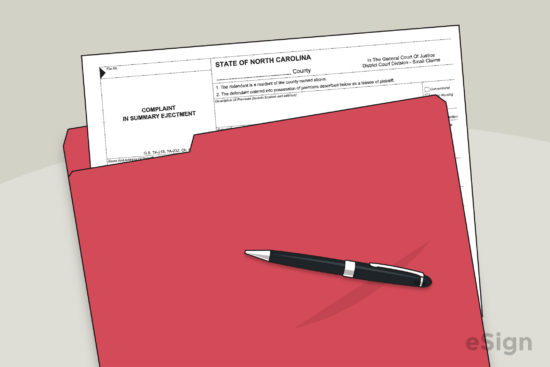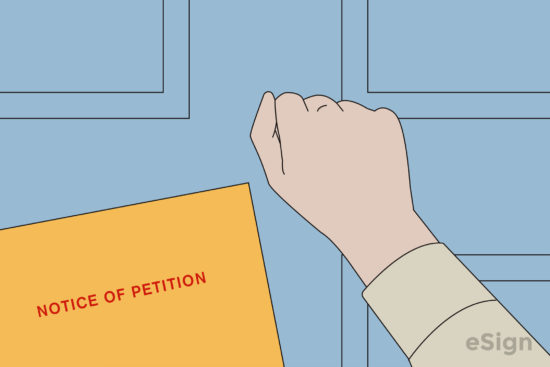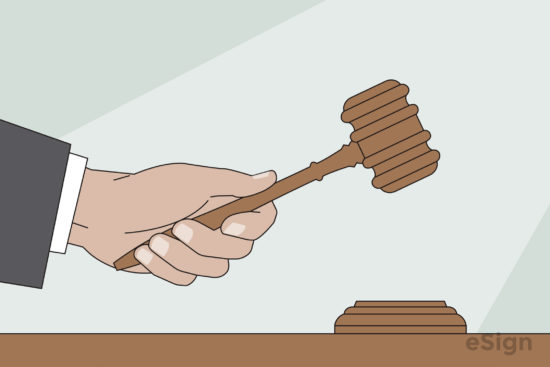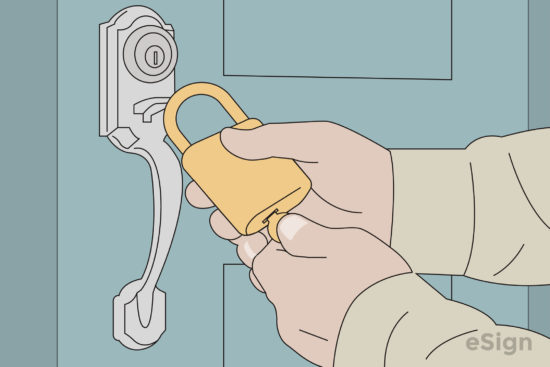Eviction Notices: By Type (3)
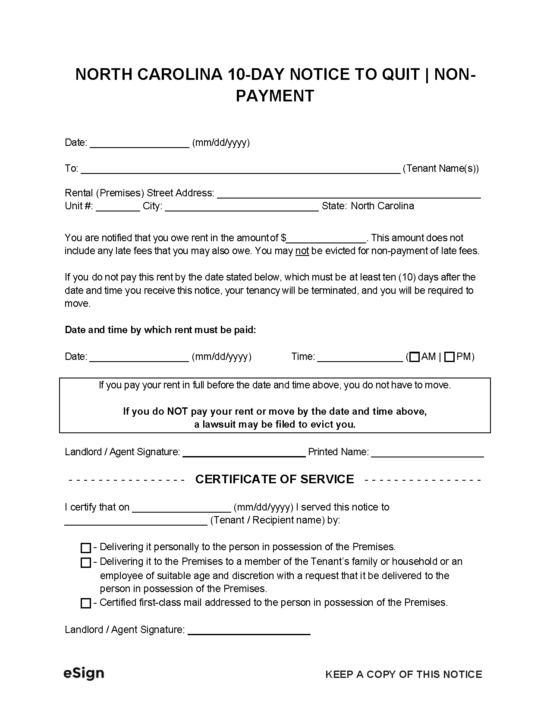 10-Day Notice to Quit | Non-Payment – Demands that a tenant pay overdue rent within 10 days or move out. 10-Day Notice to Quit | Non-Payment – Demands that a tenant pay overdue rent within 10 days or move out.
Download: PDF, Word (.docx), OpenDocument |
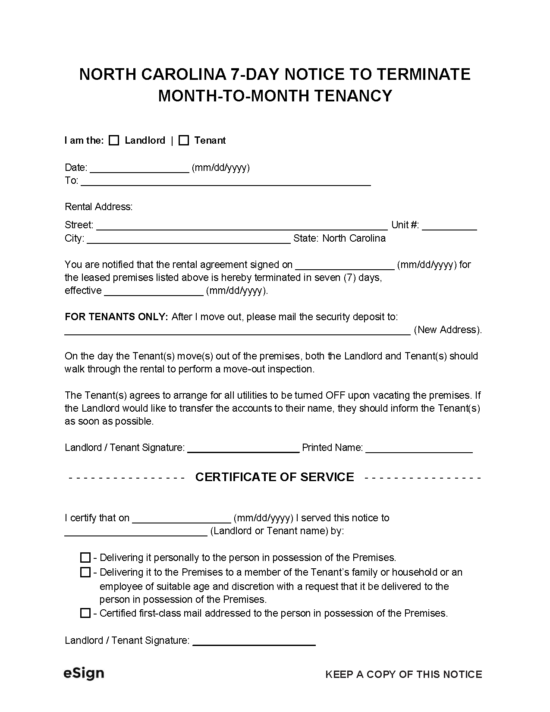 7-Day Notice to Terminate | Month-to-Month Lease – Can be used by tenants and landlords to terminate a month-to-month lease agreement. 7-Day Notice to Terminate | Month-to-Month Lease – Can be used by tenants and landlords to terminate a month-to-month lease agreement.
Download: PDF, Word (.docx), OpenDocument |
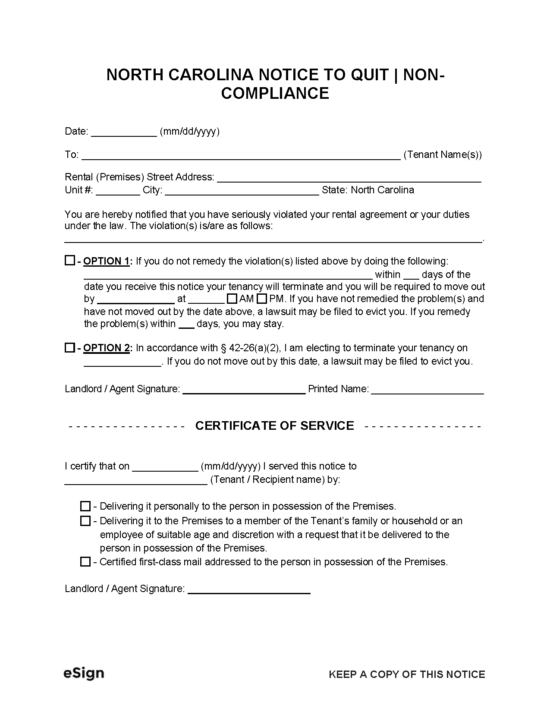 Notice to Quit | Non-Compliance – Informs the tenant that they have broken the terms of their tenancy and must leave the unit. Notice to Quit | Non-Compliance – Informs the tenant that they have broken the terms of their tenancy and must leave the unit.
Download: PDF, Word (.docx), OpenDocument |
Notice Requirements
How to Evict a Tenant in North Carolina
Step 1 – Serve Notice to Quit
The eviction process often starts with the delivery of an eviction notice on the tenant. In North Carolina, this step is generally not required if the tenant violates the lease other than non-payment of rent.
That said, an eviction notice can sometimes save the landlord the trouble of going through the court system to have the tenant vacate.
Step 2 – File Lawsuit
If the tenant has not moved out and the deadline has passed, the landlord can file a Complaint In Summary Ejectment with the Small Claims Court of the county in which the property is located. E-filing is also available for eviction forms.
If the landlord is seeking unpaid rent or damages from the tenant, they must also complete and file the Certification of Identity.
Step 3 – Summons
After opening an eviction case, the court will produce a Summons to be served on the tenant along with the Complaint. Service must take place via certified mail or through the sheriff.
If the forms are mailed, the landlord must file a sworn statement and postal receipt with the court proving service was made.
Step 4 – Attend Hearing
The landlord and tenant must appear at the court hearing and state their cases. If the verdict is in the landlord’s favor, the court will issue a Judgment in Action, ordering the tenant to vacate the property.
Both parties will be given 10 days to appeal the decision.
Step 5 – Writ of Possession
If the appeal period expires and the tenant has not vacated, the landlord can file a Writ of Possession with the court, ordering the sheriff to remove the tenant. The sheriff will remove the tenant within five days of receiving the writ.
Court Forms + Resources
Forms
- Certification of Identity
- Signed by: Landlord and Notary (if applicable)
- Complaint In Summary Ejectment
- Signed by: Landlord
- Judgment in Action for Summary Ejectment
- Signed by: Judge
- Summons
- Signed by: Court Clerk and Sheriff
- Writ of Possession
- Signed by: Court Clerk and Sheriff
Resources
